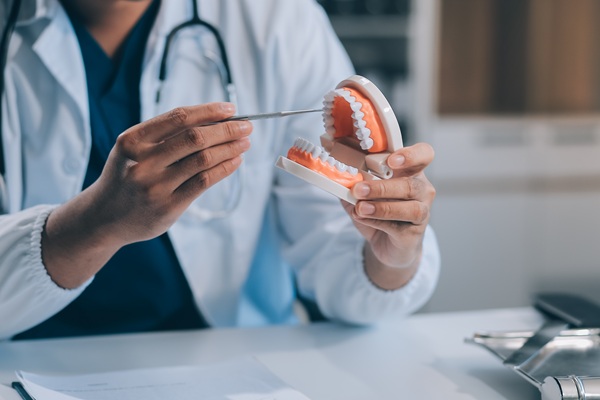What Dental Issues Does Invisalign Treat?

Using custom-fit plastic trays, Invisalign® treatments are a restorative and corrective treatment for several dental problems. As an orthodontic solution, clear aligners are often compared to a treatment using metal braces. Corrective measures typically address crooked or misaligned teeth, and provided the patient wears the trays for the prescribed length of time, the results are similar to traditional braces. However, these aligners are often considered to provide results sooner and with less discomfort.
Dental conditions that can be addressed through aligners
When looking into orthodontic solutions, aligners may be a clear choice over traditional metal braces. While it depends on the cosmetic goals and specific bite issues, there are some conditions where aligners are an ideal choice for treatment.
Misaligned teeth
Teeth that are out of line can make it difficult to chew and cause embarrassment when smiling. Clear trays will put pressure on the teeth that are lying along the outside of the jaw to restore them to a uniform position along the jawline. The condition of the misalignments impacts the treatment plan, but patients can expect to wear the trays for six months to a year.
Crowded or crooked teeth
Even though there is a difference between teeth that are crooked and crowded, the impact on one’s confidence and appearance are the same. Clear trays provide an inconspicuous treatment plan to turn the teeth and create more room for a beautiful, straight smile. Treatment can range from six months to a year before optimum results are achieved.
Bite problems
There are several bite conditions that clear aligner trays can address, including an overbite, underbite, crossbite, and open bite. These conditions impact the way the teeth align and come together within the mouth. These bites affect the ability to eat and speak and often lead to discomfort and pain if left unaddressed. Within just a few months, patients with minor bite problems can find relief and corrective help with aligners.
Orthodontic conditions that require an alternate solution
Dental health specialists often recommend Invisalign® treatments because of the effectiveness and efficiency of the corrective process, but there are some conditions that may require more specialized treatment. Though aligners are successful in straightening crooked teeth, severely rotated teeth will require more individual attention through specialized equipment. Large gaps between the teeth may require crowns, veneers, or composite bonding, with some spaces needing bridgework or implants to address the gap.
In some cases, the patient’s oral condition may not work well with the design and process of clear aligners. A severe overbite may not see the same successful results when compared to traditional braces. If a patient deals with extrusion or intrusion, the process is not able to lower or raise the position of the teeth enough to correct the problem. Additionally, teeth that are too short or pegged can keep the trays from having a good fit and working correctly.
Conclusion
Though Invisalign® treatments can address many orthodontic problems, check with a dentist about possible limitations. Treatment is only effective when properly prescribed to address a specific condition.
Request an appointment here: https://www.tucsonazdentistry.com or call Advanced Family Dentistry at (520) 353-3002 for an appointment in our Tucson office.
Check out what others are saying about our dental services on Yelp: Invisalign in Tucson, AZ.
Recent Posts
Invisalign® clear aligners might be ideal for you if you do not want to deal with a mouth full of metal. The treatment involves using clear aligner trays to push your teeth to a better alignment. Braces are the oldest way to straighten teeth, and they are still an effective solution. It just so happens…
Over 11 million people around the globe have trusted Invisalign® therapy to straighten their teeth more comfortably and discreetly. Invisalign trays gently nudge teeth into an improved alignment through small, calculated movements. If you are ready to embark on your journey to a straighter smile, continue reading for six tips that can help you get…
The iTero® Element 5D Imaging System improves the process of diagnosis, treatment planning, and patient communication. If you are curious about how this advanced, specialized scanner improves dental practices and the Invisalign® treatment process, continue reading for six benefits of the iTero scanner.Many people have negative first impressions of rudimentary dental impressions. Suppose you have…
With Hannukah, Christmas, and other celebrations happening, many people associate the latter section of the year as a season of giving. If you are ready to think outside of the box this holiday season, consider giving the gift of Invisalign® for a straighter smile.While it’s true that most people consider straight teeth as more aesthetically…


